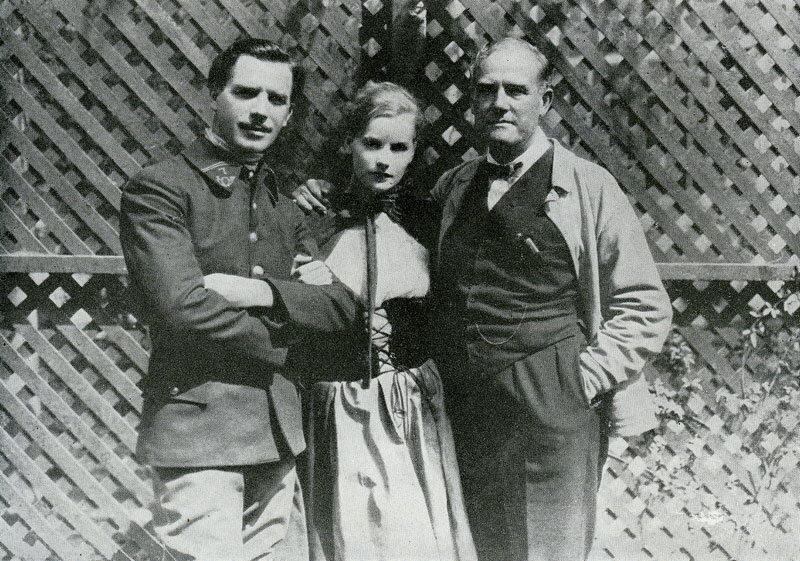The wife of Sven Gustafson, Emy Owandner, made only one screen appearance, that of a role in the film "Sun Over Klara" ("Sol over Klara"), directed by Emil A. Lingheim and written by Erik Lundegard, which lists her role as uncredited. The Swedish Film Institute, rather lists her as appearing in two earlier comedies for Europa, one in which she appeared with Sven Gustafson.
Swedish director Gustaf Edgren co-wrote the screenplay to the 1929 film "Kongstjorda Svensson" in which Sven Garbo appeared with actresses Brita Appelgren and Karen Gillberg. The film was photographed by Hugo Edlund.
Edvin Adolphson had directed "When Roses Bloom" ("Na rosorna sla ut"), starring Sven Garbo during 1930. The film was scripted by Gosta Stevens and also stars Karin Swanstrom, Margita Alven, and Anna-Lisa Baude. Else Marie Hansen was given her first appearance on screen in with the film. Greta Garbo visited her brother, Sven Gustafson, while in Stockholm. The Private Life of Greta Garbo, published in Photoplay Magazine during 1930 is, much like the biography of Greta Garbo penned by Norman Zierold, an enjoyable, if not charming read; it includes a brief mention of Sven Garbo, "At one time Miss Garbo's brother, Sven, who has been quite successful abroad both on stage and screen, wanted to come to Hollywood. He even sent screen tests of himself to Metro-Goldwyn Mayer." Rilla Page PalMborg again mentioned that Sven Garbo had sent screen tests of himself to M.G.M the following year when publishing the biography The Private Life of Greta Garbo in book form during 1931. While giving an account of Garbo's activities while filming the silent film "The Kiss" it relies heavily on quotes of her housekeeper-valet Gustaf, according to whom she kept a large portrait of her brother in her living room, arranged upright on a table. "Garbo was all upset the day she received a letter from her brother saying that the motion picture company for whom he was working wanted to change his name to Garbo. She said that she made the name of Garbo herself, that it was her name and there should be no one else using it. She called her brother not to allow the motion picture company to use it....but he answered that it was too late."
To complement whispers that Sven Gustafson would have like to film in America, when in actuality it was Greta Garbo that travelled between the two countries, Screenland Magazine related,"Everyone says there is only one Garbo in pictures, but the Swedish cyclone's brother Sven has been signed to Paramount for talkies. Sven Garbo is tall and handsome and reported to be a good bet for pictures." Yet, without dispelling this, Photoplay Magazine during 1931 translated the title of Edvin Adolphson's film "Na Rosarna Sla Ut" as "Hole in the Wall" and listed it as being produced by Paramount. Photoplay later added,"Sven Gustafsson, brother of Gret Garbo, makes his American debut in it. He's a tall, limp, black-haired boy with a moustache and doesn't beT the faintest resemblance to his famous sister. And he's a punk actor, if this is a sample. The picture tells a light, chatty love story. There's one good actor in the troupe- an ugly gentleman named Uno Henning." Inches above a synopsis of the Greta Garbo film "Inspiration", Photoplay magazine again looked at the film in brief, "Swedish talkie brings us Sven Gustaffson, Garbo's brother, but nothing like his famous sister. Light and chatty love story."
Photoplay magazine during 1934, in an article entitled "Greta Garbo Wanted to be a Tightrope Walker, by Leonard Clairmont, mentioned Sven Garbo as being Greta Garbo's agent in Sweden for the pruchase of an estate called Dyvik which afforded a two mile long beach.
Sven Garbo
Gustaf Molander
Silent Film Greta Garbo
Greta Garbo and Mauritz Stiller
Silent Film Greta Garbo
Greta Garbo
Back to top: Sven Garbo
